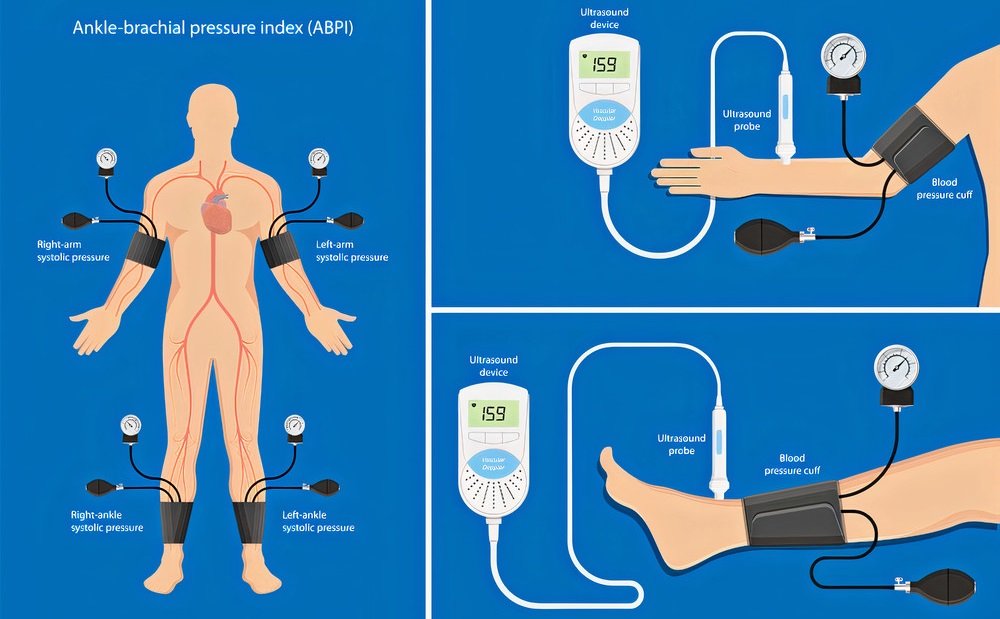Diagnosis of peripheral vascular disease

First, when you tell your doctor about your symptoms, he will ask you about your medical history, such as smoking, your lifestyle, and if you have diabetes, hypertension, or any disease.
After history taking, the doctor will examine you to consider a specific diagnosis. The physical examination will include things, such as:
1) Ankle/brachial pressure index

It is the first test that after suspicion of peripheral vascular disease. The doctor will measure your blood pressure in the arm and leg. Then he will take the ratio between the leg and arm pressures. If this ratio is 0.9:1.2, it is within the normal range. If the result is less than 0.9, it will suggest peripheral vascular disease. According to the ankle/brachial index, we can classify the peripheral vascular disease into mild (0.7:0.9), moderate (0.5:0.7), and sever (less than 0.5). If the result is higher than 1.4, it indicates noncompressible arteries.
Noncompressible arteries mean hardening of their wall due to calcification, which occurs in diabetic patients. These results (>1.4) are false-negative results, which require further investigations because these patients often have severe peripheral vascular disease and a higher risk of death from cardiovascular disease.
